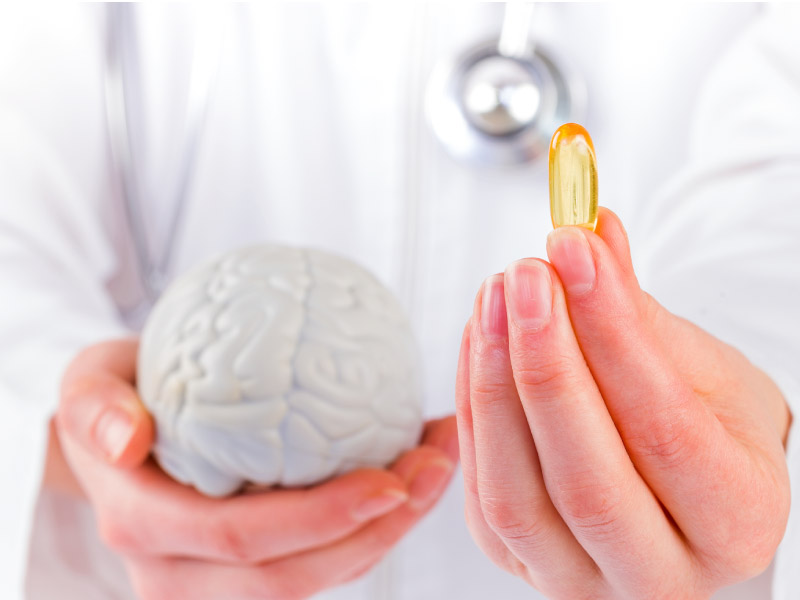
We NEED omega-3s to improve our brain health as we get older! YES! It’s true. This nutrient is essential because our bodies cannot make it on its own.
In October of 2022, The University of Texas Health Science Center at San Antonio did an important study. Volunteers with higher concentrations of omega-3 fatty acids were found to have better brain structure and cognitive function in middle-aged people.
Omega-3 fatty acids help all the cells in your body function as they should. They’re a vital part of your cell membranes, helping to provide structure and supporting healthy interactions between cells. While they’re important to all your cells, omega-3s are concentrated in high levels in cells in your eyes and brain.
Omega-3 is an essential nutrient.
These are major benefits:
- Anti-inflammatory properties
- Lowers the bad cholesterol (LDL)
- Lowers blood pressure
- Lowers risk of heart disease
- Helps with blood clotting
- Blood flow regulation
- Aids in cellular health (especially for the eyes and brain)
- Helps regulate hormones
- Fertility support
- Aids in healthy skin
What are omega-3 fatty acids?
Omega-3 fatty acids are found in both marine and plant based foods and oils. There are three types of omega-3 fatty acids:
- Alpha-linolenic Acid (ALA), found in plant oils like flaxseed, soybean, and canola oils.
- Eicosapentaenoic Acid (EPA), found in oily fish, like salmon and tuna
- Docosahexaenoic Acid (DHA), found in oily fish, like salmon and tuna
ALA is an essential omega-3 fatty acid meaning that your body can’t make it so you must get if from the diet. EPA and DHA are not considered essential since they can be produced from ALA; however this process is not very efficient and therefore cannot be relied upon to produce significant amounts of EPA and DHA.
Balancing your hormones
Omega-3 can play a big part in creating hormone balance, primarily because of its anti-inflammatory properties. While healthy fat intake is essential for hormone health, focusing on optimizing your balance of the omega-3 to omega-6 ratio is crucial. A healthy ratio of omega-6 to omega-3s to focus on is 1:1. Too many omega-6s in relation to omega-3s can increase levels of inflammation in the body, which spurs a recipe for disaster with your hormones.
Due to the Standard American Diet (SAD) and the high levels of industrial seed oils (corn, soy, canola, etc.) we consume, most Americans have a ratio closer to 1:20 or worse. This disproportionate balance of omega-3s to omega-6 fatty acids contributes to systemic inflammation, poor fat metabolism, weight gain, and obesity. Fortunately, research has found that the negative impacts of a poor omega-3 to omega-6 ratio can be reversed by taking more EPA and DHA, which are found in good fish oil supplements. You know my saying, “OUR BODIES ARE INCREDIBLE HEALING MACHINES WHEN WE GIVE IT THE RIGHT FOODS!”
Taking Omega-3 Supplements


It difficult for the average person to get enough omega-3’s in their diet with food alone.
This is from Dr. Axe–he’s one of those smart fellows I follow!
Many health organizations have released their own guidelines for omega-3 intake. Most generally range between 250–500 milligrams of combined EPA and DHA daily. However, taking higher amounts up to 5,000 milligrams daily has been shown to be safe with minimal risk of adverse side effects.
It’s important to read the ingredients label of your supplement carefully to determine how much omega-3 fatty acid it actually contains. Fish oil capsules, for example, often contain around 1,000 milligrams of fish oil but may actually provide a much smaller amount of EPA and DHA.
Lots more nutritional information (and delicious recipes) in my cookbook, Nourish Your Way to Health.
#NourishYourWay
Thanks for reading…
Adrienne
xo

